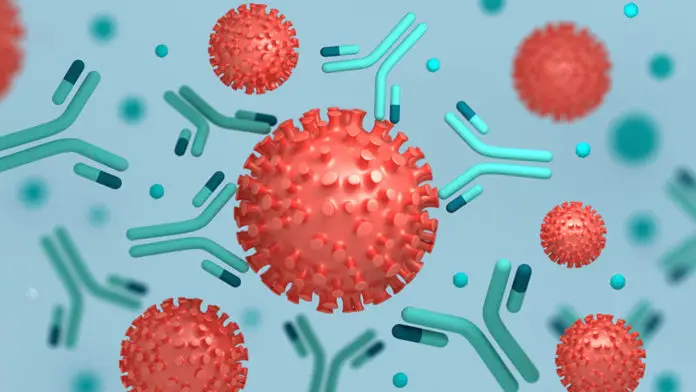Antibodies are used in medicine as a crucial means of both detecting and treating diseases. However, antibody titers are an often-misunderstood concept that can allow for precise measurement of antibody strength and their resulting potential. A strong understanding of titers leads to more accurate disease detection and more effective application of antibodies in treating disease.
Antibodies and Antigens
An antigen is any molecule capable of stimulating a response in the immune system. Each antigen has a distinct physical shape, called an epitope, which causes different potential responses from the immune system.
An antibody, sometimes called immunoglobulin, is a protein structure with a forked shape. Antibodies are produced by the immune system as a response to antigens entering the system. Each antibody has a characteristic called a paratope, which targets and binds to an antigen’s epitope. The resulting bond enables targeted antigens to be neutralized and eliminated from the body. This is the basic mechanism by which the immune system heals disease.
A titer is not a type of molecule or protein but a measure of an antibody’s strength within a sample of blood. The relationship between antibodies and antigens is, therefore, a cycle of cause and effect, while the relationship between antibodies and antibody titers is a matter of pure mathematics.
Understanding Antibody Titers
A titer is expressed as a ratio and is used to measure or express the strength of a solution. Applied to antibodies, the titer refers to the concentration of a specific antibody (or antibodies) in a blood sample. The titer of an antibody is measured by the process of serial dilution, incubating the dilutions with antigens, then assay testing each dilution for the antibodies in question. The most diluted sample in which antibodies can still be detected is used to express the titer. The greater the concentration of the antibody in this sample, the higher the titer.
The result is expressed like any other ratio in the form of two numbers separated by a colon. A titer of 1:100, for example, would indicate that 1 part blood sample per 100 parts of the dilution substance (typically a saline solution) is the most diluted sample wherein the desired antibodies can still be detected. In a real-world medical setting, a blood sample with a high antibody titer is most often used to diagnose the presence of various diseases. More specifically, high titers in natural blood samples point to the immune system’s response to a disease rather than the disease antigens themselves. The high titer is the result of natural antibody production to neutralize the disease-causing antigen.
A high titer is not inherently good or bad. While the prevalence of antibodies means the immune system is working hard, it can also indicate that a condition is severe enough to warrant a strong immune system response. In that case, antigens, as well as antibodies, may be present in high concentrations. It can sometimes be necessary for an antibody titer assay to be paired with other test results to create coherent, accurate diagnoses.
Increasing Titers to Improve Antibodies
Stimulating the production of higher antibody titers for improved response against specific antigens can be a complex proposition. John Buzzo, a research biologist in the field of therapeutics, explains what the process might look like in a lab setting in the broadest possible strokes.
“Sequential antigen addition until a higher antibody response is achieved,” he explained. “[We can then] check for antibody degradation over time and reevaluate avidity.” He also noted that higher titers can be crucial to the stability of an antibody response.
In a therapeutic setting, the actual process of increasing antibody production—and thus achieving higher titers—may be accomplished with medicines or treatments depending on the antigens being targeted. Routine actions taken by the patient, such as getting enough sleep, staying hydrated, and eating healthy foods, can also significantly increase the strength of the immune system and, in turn, its ability to produce antibodies.
The process of increasing antibody titers and testing for that increase has a great deal of variables, such as the types of antigens being targeted, the end goals, the setting (such as a medical facility versus a research lab), and technical details about the antibody, antigen, and substrate medium being worked with. Buzzo recalls, “Antibodies we had made for smaller molecules required way more injections.”
The Importance of Obtaining Quality Antibodies
To demonstrate the desired effects, laboratories must rely on polyclonal antibodies, monoclonal antibodies, and secondary antibodies available for use in immunocytochemistry, immunohistochemistry, flow cytometry, ELISA, and other applications. With careful selection of quality antibodies and viral titer assessments, researchers stand to learn critical information about devastating illnesses and how the body can better combat them.
Sources:
https://www.technologynetworks.com/immunology/articles/antigen-vs-antibody-what-are-the-differences-293550
https://www.bloodhorse.com/horse-racing/articles/145660/understanding-antibody-titers
https://www.news-medical.net/health/What-is-an-Antibody-Titer.aspx
Buzzo, John, Senior Research Associate, Entrada Therapeutics, Boston, Mass. – personal interview


